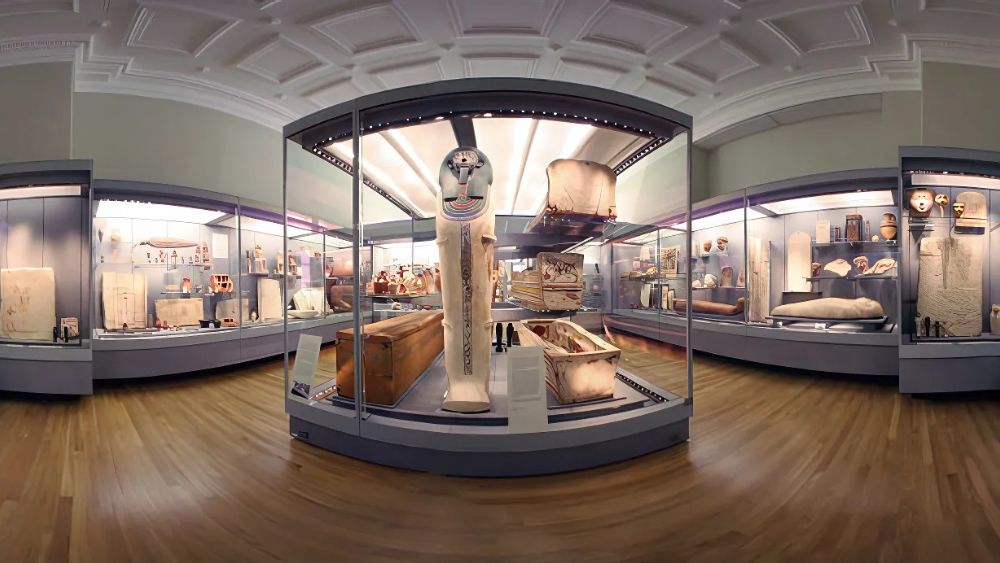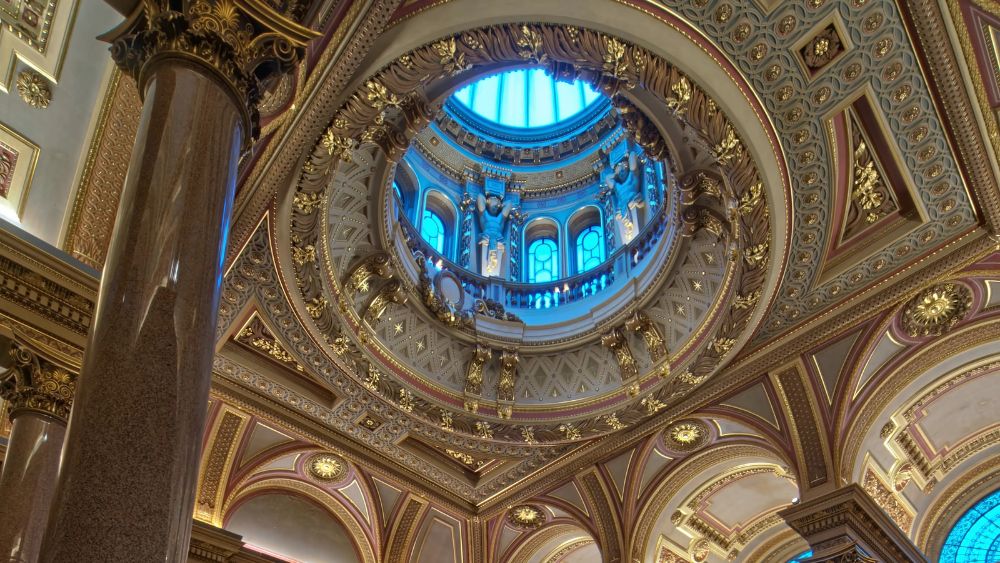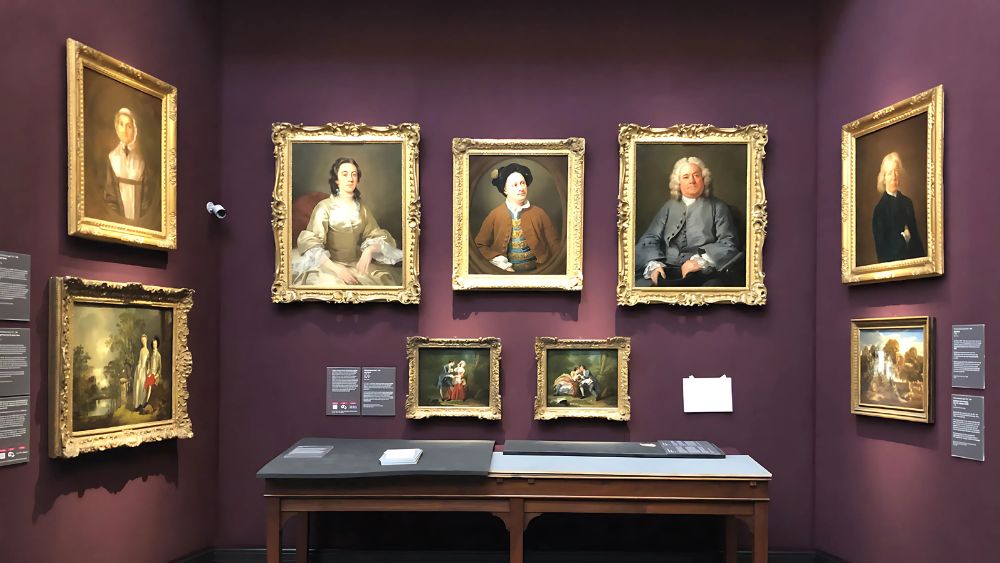Fitzwilliam Museum: History, Collections and Visitor Tips
Visit the Fitzwilliam Museum in Cambridge and explore incredible art, history, and culture. Enjoy free exhibitions, and a beautiful architecture.
Introduction
The Fitzwilliam Museum in Cambridge is one of the most renowned museums in the United Kingdom, known for its impressive collection of art and antiquities. Founded in 1816 through a bequest by Richard Fitzwilliam, the museum is part of the University of Cambridge and serves as a center for research, education, and cultural enrichment.
Housed in a grand neoclassical building on Trumpington Street, the museum boasts a vast collection that spans centuries and civilizations. Visitors can explore treasures ranging from ancient Egyptian artifacts and classical sculptures to medieval manuscripts, Renaissance paintings, and modern artworks. The museum is particularly famous for its holdings of European paintings, including masterpieces by artists such as Rembrandt, Monet, and Picasso.
Beyond its rich collections, the Fitzwilliam Museum offers a variety of educational programs, temporary exhibitions, and interactive experiences, making it a key cultural destination in Cambridge. Best of all, entry to the museum is free, allowing visitors to engage with its world-class exhibits without cost.
History of Fitzwilliam Museum

The Fitzwilliam Museum in Cambridge has a rich history dating back to the early 19th century. It was founded in 1816 through a generous bequest from Richard Fitzwilliam, 7th Viscount Fitzwilliam of Merrion (1745–1816), an Irish nobleman, collector, and philanthropist. Fitzwilliam left his extensive collection of art, books, and manuscripts to the University of Cambridge, along with £100,000 to establish a museum. His vision was to create a public institution that would inspire learning and appreciation of the arts.
Early Development & Construction
- Initially, Fitzwilliam’s collection was housed in the Old Schools in Cambridge, but as the collection grew, the need for a dedicated building became evident.
- In 1835, the university approved plans for a new museum, and the foundation stone was laid in 1837.
- Designed by George Basevi, the museum was built in a grand neoclassical style, inspired by ancient Greek and Roman architecture. However, Basevi tragically died before its completion, and the project was finished under C.R. Cockerell, another prominent architect.
- The museum officially opened to the public in 1848.
Expansion & Growth
- Over the years, the museum expanded significantly, with new wings and galleries added to accommodate its ever-growing collection.
- In the 20th century, significant additions included the Mellon Gallery (1931) and Courtauld Gallery (1936), which helped showcase more paintings and decorative arts.
- The museum continued to evolve, with modern renovations improving storage, research facilities, and visitor experience.
Collections & Influence
- Fitzwilliam’s initial collection included thousands of paintings, prints, rare books, and manuscripts, which laid the foundation for what is now one of the UK’s leading museums.
- Over time, the museum acquired significant works from ancient Egypt, Greece, Rome, and Asia, along with European paintings from Titian, Rembrandt, Monet, Van Gogh, and Picasso.
- Today, it holds over half a million objects, spanning centuries of human history and artistic achievement.
Modern Era & Legacy
- The museum remains a leading center for research and education, collaborating with scholars and institutions worldwide.
- Free to the public, it continues to attract visitors, students, and art lovers from around the globe.
The Fitzwilliam Museum stands today as a testament to its founder’s vision—offering a space where art, history, and knowledge come together for the benefit of all.
Collection of Fitzwilliam Museum
The Fitzwilliam Museum in Cambridge houses one of the finest and most diverse collections of art and antiquities in the United Kingdom. With over half a million objects, its collection spans from ancient civilizations to modern times, covering a vast range of artistic and historical treasures.
Paintings & Fine Art
The museum’s paintings collection is one of its most celebrated features, showcasing masterpieces from the Renaissance to the 20th century.
Notable Artists:
- Renaissance & Baroque: Titian, Rubens, Rembrandt, Van Dyck
- 18th & 19th Century: Gainsborough, Turner, Constable
- Impressionists & Modernists: Monet, Cézanne, Van Gogh, Picasso
Highlights:
- “Self-Portrait” by Rembrandt – A stunning example of the Dutch master’s work.
- Monet’s “Springtime” – A beautiful Impressionist landscape.
- Titian’s “Tarquin and Lucretia” – A dramatic Renaissance painting.
Antiquities & Archaeology
The museum houses an extensive collection of ancient artifacts from around the world, offering a glimpse into early civilizations.
Key Collections:
- Ancient Egypt – Mummies, statues, and funerary objects.
- Ancient Greece & Rome – Pottery, sculptures, and coins.
- Near Eastern & Asian Artifacts – Items from Mesopotamia, China, and Persia.
Highlights:
- Egyptian Coffins & Mummies – A well-preserved collection of burial artifacts.
- Greek Pottery – Exquisite examples of black- and red-figure vases.
- Roman Coins – A vast numismatic collection covering centuries of Roman rule.
Manuscripts & Rare Books
The museum’s manuscript collection is among the finest in the world, featuring illuminated manuscripts, medieval texts, and early printed books.
Key Highlights:
- The Fitzwilliam Book of Hours – A lavishly illustrated medieval prayer book.
- Dante’s Divine Comedy (15th century) – A beautifully decorated edition.
- Islamic Manuscripts – Exquisite Persian and Arabic calligraphy.
Decorative Arts & Applied Arts
The museum has an impressive selection of European and Asian decorative arts, including ceramics, textiles, glassware, and furniture.
Key Collections:
- Porcelain & Ceramics – Pieces from China, Japan, and Europe (Meissen, Sèvres, and Wedgwood).
- Textiles & Tapestries – Intricately woven medieval and Renaissance textiles.
- Sculpture & Metalwork – Bronze sculptures and religious artifacts.
Highlights:
- Chinese Ming & Qing Dynasty Porcelain – Exquisite blue-and-white ceramics.
- Fabergé Collection – Intricate decorative art pieces.
Coins & Medals
The numismatic collection includes coins, medals, and banknotes from ancient times to the modern era. It provides insights into the economic and political history of different civilizations.
Highlights:
- Greek & Roman Coins – Some of the finest examples from antiquity.
- Medieval & Renaissance Medals – Rare pieces commemorating historical events.
- British & European Currency – Coins from various dynasties and rulers.
Modern & Contemporary Art
While the museum is known for its classical collections, it also features modern and contemporary works.
Highlights:
- Pablo Picasso’s Drawings – A glimpse into his creative process.
- Lucian Freud Prints – Works by the famous British painter.
Design and Visibility of Fitzwilliam Museum

The Fitzwilliam Museum in Cambridge is an architectural masterpiece, combining classical grandeur with modern functionality. Its striking design, prominent location, and carefully curated layout make it one of the most visually impressive museums in the UK.
Architectural Design
The museum’s neoclassical design is one of its defining features, reflecting the influence of Greek and Roman architecture.
Exterior Architecture:
- The main building was designed by George Basevi in the Greek Revival style, featuring a grand portico with massive Corinthian columns.
- The pedimented façade and large, arched windows give the museum an imposing yet elegant presence.
- Following Basevi’s death, C.R. Cockerell completed the project, refining its neoclassical elements.
Interior Design:
- The entrance hall and galleries are richly decorated with marble floors, intricate ceilings, and elaborate moldings.
- The Founder’s Entrance Hall features a grand staircase leading to the main galleries.
- The museum has undergone several extensions over the years, blending historical and modern design elements to accommodate a growing collection.
Visibility & Location
The Fitzwilliam Museum is located on Trumpington Street, one of the most prominent roads in Cambridge, making it highly visible and easily accessible.
Key Aspects of Visibility:
- Central Location – Situated near the heart of Cambridge, close to the university and popular tourist spots.
- Landmark Status – The museum’s grand neoclassical façade makes it one of the city’s most recognizable buildings.
- Signage & Wayfinding – Well-marked entrances and clear signage help guide visitors.
The combination of historical elegance, modern accessibility, and prime location ensures that the Fitzwilliam Museum remains a prominent cultural landmark in Cambridge.
Visit Fitzwilliam Museum – Opening times, and Tickets
The Fitzwilliam Museum in Cambridge is a must-visit destination for art and history enthusiasts. Home to an extensive collection of paintings, sculptures, antiquities, and manuscripts, the museum offers a unique cultural experience. Whether you are visiting to explore its world-class exhibitions or simply want to enjoy a day immersed in history, here’s everything you need to know before your visit.
Opening Times
The Fitzwilliam Museum welcomes visitors throughout the week, except for Mondays.
- Tuesday to Saturday: 10:00 AM – 5:00 PM
- Sunday and Bank Holidays: 12:00 PM – 5:00 PM
- Closed on Mondays
The last entry is at 4:40 PM, so it is advisable to arrive well in advance to make the most of your visit.
Tickets & Admission
One of the best things about the Fitzwilliam Museum is that general admission is free, allowing everyone to explore its vast collection without any cost. There is no need to book tickets in advance for the general galleries.
For special exhibitions, visitors may need to reserve a spot in advance. The museum offers a ‘Pay What You Wish’ scheme for some exhibitions, allowing guests to contribute any amount they choose when booking tickets.
Visitor Facilities
To enhance your experience, the museum provides several facilities for visitors.
- Café & Dining: The Courtyard Kitchen offers a variety of meals, snacks, and beverages, using fresh and locally sourced ingredients. It operates during museum hours but closes slightly earlier at 4:30 PM.
- Gift Shop: The Courtyard Shop features a selection of books, souvenirs, and unique gifts inspired by the museum’s collection. It is open daily within museum hours.
How to Get There
The museum is located in Trumpington Street, Cambridge, within easy reach of public transport and walking distance from Cambridge city center. Visitors can arrive by bus, bike, or car, though parking near the museum is limited.
Contact Information
For more details, visitors can contact the museum directly:
- Phone: +44 (0)1223 332 900
- Website: Fitzwilliam Museum
The Fitzwilliam Museum offers an unforgettable experience, combining historical treasures with stunning artwork. Whether you are a first-time visitor or a returning guest, there is always something new to discover.
Nearby Attractions & Dining Options

A visit to the Fitzwilliam Museum in Cambridge is a fantastic experience, but the surrounding area also offers plenty of attractions and dining options to explore. Whether you’re interested in historic landmarks, scenic walks, or delicious food, there is something for everyone nearby.
Top Attractions Nearby
- King’s College & Chapel (5 mins walk) – A must-see for its stunning Gothic architecture.
- Cambridge University Botanic Garden (10 mins walk) – A peaceful escape with diverse plant species.
- The River Cam & Punting (10–15 mins walk) – Enjoy a scenic punting tour past historic colleges.
- Market Square (10 mins walk) – Browse fresh produce, crafts, and street food stalls.
- Sedgwick Museum of Earth Sciences (10 mins walk) – Discover fossils, minerals, and dinosaur skeletons.
Best Places to Eat Nearby
- Fitzbillies (5 mins walk) – Famous for Chelsea buns and great coffee.
- The Oak Bistro (5 mins walk) – Cozy spot for British and European cuisine.
- The Cambridge Chop House (10 mins walk) – Hearty British dishes and excellent steak.
- Aromi (10 mins walk) – Authentic Sicilian pizza, focaccia, and gelato.
- The Eagle Pub (10 mins walk) – A historic pub where DNA was announced, serving classic British food.
Cambridge offers a perfect mix of history, nature, and great food—making your visit to the Fitzwilliam Museum even more memorable!
Conclusion
The Fitzwilliam Museum is a must-visit destination in Cambridge, offering a world-class collection of art, antiquities, and manuscripts. With free admission, stunning neoclassical architecture, and diverse exhibitions, it provides a unique cultural and educational experience.
Located in the heart of Cambridge, the museum is surrounded by historic landmarks, beautiful gardens, and excellent dining options, making it easy to explore more of the city. Whether you’re an art lover, history enthusiast, or first-time visitor, the Fitzwilliam Museum is the perfect place to discover history, creativity, and culture in one visit.
FAQs About The Fitzwilliam Museum
Where is the Fitzwilliam Museum located?
The Fitzwilliam Museum is located on Trumpington Street, Cambridge, UK, near the University of Cambridge.
What are the opening hours of the Fitzwilliam Museum?
Tuesday to Saturday: 10:00 AM – 5:00 PM
Sunday & Bank Holidays: 12:00 PM – 5:00 PM
Closed on Mondays
Is entry to the Fitzwilliam Museum free?
Yes, general admission is free, but some special exhibitions may require booking with a “Pay What You Wish” donation option.
What kind of collections can I see at the museum?
The museum houses paintings, sculptures, antiquities, manuscripts, coins, and decorative arts from different cultures and historical periods.
How do I get to the Fitzwilliam Museum?
The museum is easily accessible by bus, bike, or walking from Cambridge city center. Parking is limited, so public transport is recommended.
Does the museum offer guided tours?
Yes, the museum offers guided tours and audio guides, but availability may vary. Check in advance for schedules.
Is photography allowed inside the museum?
Photography is allowed in most areas, but flash photography and tripods are restricted. Some exhibitions may have specific rules.
Does the museum have a café or restaurant?
Yes, the Courtyard Kitchen serves food, drinks, and snacks during museum hours, closing at 4:30 PM.
Can I buy souvenirs at the museum?
Yes, the Courtyard Shop offers books, gifts, and souvenirs inspired by the museum’s collections.
Is the Fitzwilliam Museum wheelchair accessible?
Yes, the museum provides wheelchair access, lifts, and accessible toilets for visitors with mobility needs.
Are there activities for children and families?
Yes, the museum offers family-friendly events, workshops, and activity trails for children.
Can I bring a backpack or large bag inside?
Large bags and backpacks may need to be stored in the cloakroom for security reasons.
Does the museum host temporary exhibitions?
Yes, the museum regularly features temporary exhibitions alongside its permanent collection.
How long does it take to explore the museum?
A visit typically takes 2–3 hours, but art and history enthusiasts may want to spend longer.
Disclaimer: Travel details such as ticket prices, opening hours, and accommodation rates may change. Please check official websites or contact service providers for the latest updates.
By roamworld
